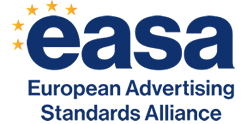EASA’s Best Practice Recommendations are designed to provide support and advice to EASA’s self-regulatory organisations and industry members on the practice of advertising self-regulation.
They are based on EASA’s Common Principles and Operating Standards of Best Practice and Best Practice Self-Regulatory Model.
EASA Best Practice Recommendations can be divided into two main categories: operational and blueprint. Operational Best Practice Recommendations give guidance on the operation, structure and procedures of SROs, while blueprint Best Practice Recommendations provide guidance on the remit and codes of self-regulatory organisations.
The content of any Best Practice Recommendation needs to be agreed on by the whole advertising ecosystem and all self-regulatory organisations at the European level.
EASA Best Practice Recommendations provide guidance and aim to achieve a consistency of remit and application throughout Europe for the benefit of European consumers and businesses, whilst recognising that the way to achieve this at the national level may differ as a result of the national regulatory, cultural and societal context.
Best Practice Recommendations do not constitute a European code and are not formally binding. The implementation of a Best Practice Recommendation at the national level is the result of a negotiation process which takes into account the existing (self) regulatory framework and the legal background to find an approach best suited to the national circumstances and needs.
The following EASA Best Practice Recommendations have been issued to date:
Operational Best Practice Recommendations (only available to EASA members)
• Advertising Monitoring: An important activity that enable SROs to play a proactive role in ensuring ads are compliant with codes, the BPR on Advertising Monitoring suggests ways of conducting monitoring exercises on specific sectors, media, or issues and suggests as well follow-up actions and reporting procedures.
• Claims Substantiation: Addressing the core principle of the reversal of the burden of proof in ad self-regulation, which refers to the need for the advertiser and not the plaintiff to provide concrete evidence to substantiate any claim made in an ad, this guidance describes what types of claims need to be substantiated, the criteria of assessment, the role of experts in the investigation process, and the appropriate length of time for accepting evidence from advertisers.
• Code Drafting and Consultation: This BPR offers advice to SROs on the procedure for reviewing and revising national advertising codes, covering also key aspects relating to the ownership of the code, its scope, coverage and content, the frequency of updates, and the processes of consultation and adoption, implementation and creating awareness of the code.
• Complaints Handling: This BPR offers advice to SROs on how to efficiently and quickly handle complaints and manage appeal procedures.
• Confidentiality of Identity of the Plaintiff: This BPR provides advice to SROs about disclosing the plaintiff’s identity and in which cases this is permitted and under which conditions, in particular when consent is required as certain cases need to be transferred under cross-border procedures to another SRO.
• Copy Advice: A service provided by SROs to advertisers, agencies, media owners and service providers who wish to check the ads’ compliance with the relevant ad standards. This BPR offers guidance to SROs as to the funding of the service, the difference with pre-clearance, and on how their services are provided.
• Jury Composition: This BPR addresses the principle of independence of juries or complaints committees, and the suggested processes to help ensure independence and impartiality of the individuals making up the jury and appeal jury.
• Publication of Decisions: This BPR offers guidance to SROs on making public their jury or complaints committee’s decisions on the compliance of investigated ads. Transparency in decision making is essential to establishing and maintaining credibility for the system and building consumer confidence.
• Communication and Awareness: This guidance emphasises the importance of raising awareness of SROs’ work and their remit to cover all marketing communication circulating in their jurisdiction. It offers insights into procedures, tools, and communication techniques.
• Self-Regulatory Organisation Funding: Adequate and proper long-term funding is essential to enable a healthy SR national system. This guidance examines the different funding models of SROs, from membership to levy-based systems.
• Standards of Services: This BPR aims to establish recommended standards of service for SROs in their daily operational activities.
Blue Print Best Practice Recommendations (available to the general public)
• Digital Marketing Communications: First published in 2005 and reviewed in 2018, this BPR outlines the remit of advertising self-regulation and SROs’ activities when it comes to the online world and helps identify marketing communications online.
• Online Behavioural Advertising: First published in April 2011, this guidance provides a pan-European, industry-wide SR standard for Online Behavioural Advertising (OBA) ensuring consumer privacy protection in Europe. It promotes transparency and identification of OBA data collection and data use practices on ads and websites via a uniform European-wide icon.
• Influencer Marketing: First published in 2018 as influencer marketing was slowly making its mark on the ad industry, this BPR was reviewed in 2023 to help SROs identify what online user-generated content is qualified as marketing communication and suggest a list of tools that may help SROs in their detective work to identify whether a piece of content is marketing in its intent.
For more information, please look at the Overview of EASA Best Practice Recommendations.
Should you wish to get the full Best Practice Recommendations, please contact EASA Secretariat.
-
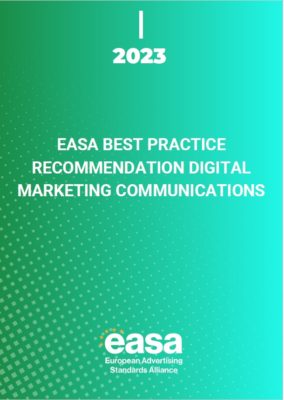
Best Practice Recommendations
EASA Best Practice Recommendations on Digital Marketing Communications 2023
15.11.2023
-
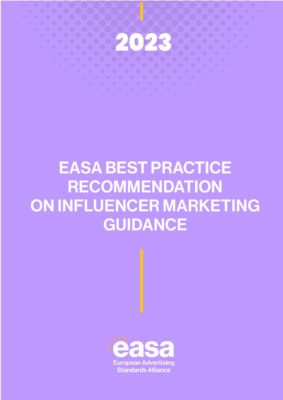
Publications
EASA Best Practice Recommendation on Influencer Marketing Guidance 2023
01.05.2023
-
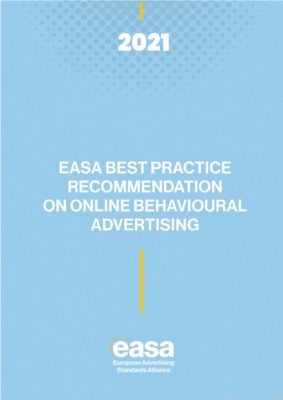
Publications
EASA Best Practice Recommendation on OBA 2021
13.04.2021
-
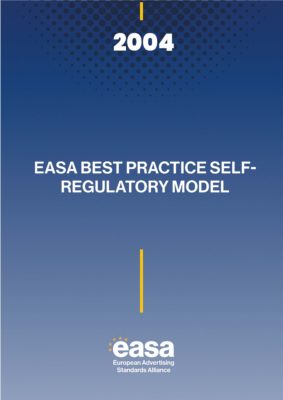
Publications
EASA Best Practice Self-Regulatory Model
13.04.2004
-
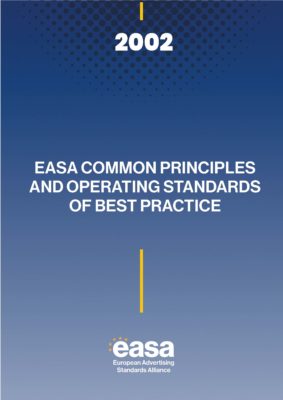
Publications
EASA Common Principles and Operating Standards of Best Practice
13.04.2002
